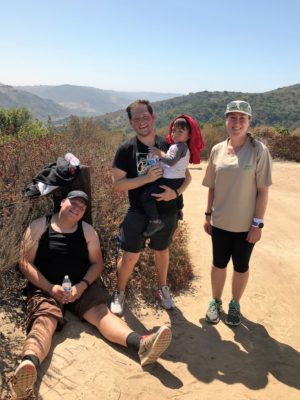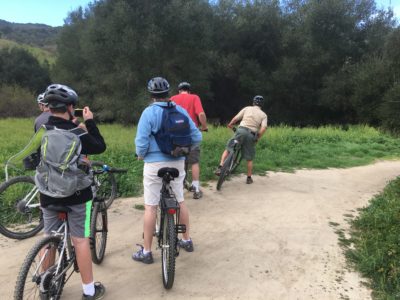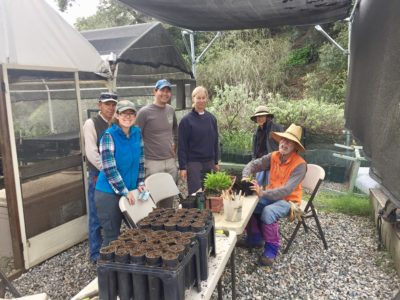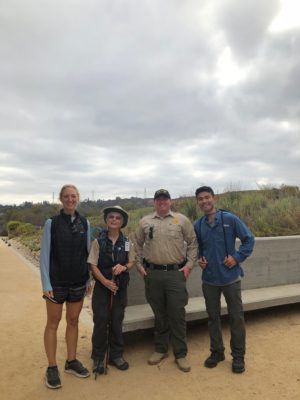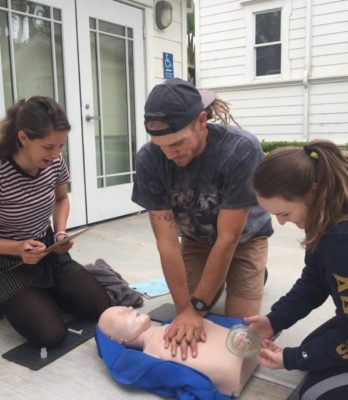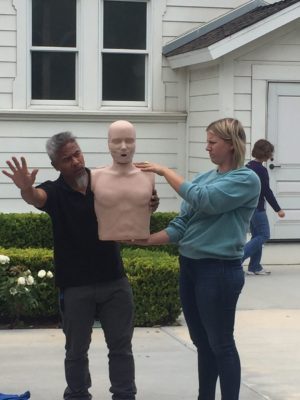Be Aware; Be Prepared
Laguna Canyon Foundation’s trained volunteers and staff lead dozens of free hikes, mountain bike rides, and stewardship events each month in the South Coast Wilderness. The details of each program – whether a yoga hike, habitat restoration event, or fitness hike – are listed online, providing the community lots of ways to “opt outside.”
Before each outing at the selected trailhead, introductions are made. The leaders reiterate the details of the activity so that participants may confirm they are appropriately prepared. Participants have the opportunity to take a quick restroom break or run back to their cars for any needed items, and then everyone hits the trail for a new adventure. It is a wonderful time to get to know our wilderness in unique ways and make a few new friends.
Just a “walk in the park,” right?
Not quite. A lot goes on behind the scenes. OC Parks and Laguna Canyon Foundation’s long-term volunteers are amazing for a lot of reasons: they love the land and they know the trails; most are experienced naturalists; many are specifically trained in their field of expertise: geology, California native plants or yoga, for example.
They are also trained in CPR and First Aid. Having recently been re-certified in CPR/FA, I am reminded how important this training is to the work we do.
During the eight-hour course, led by a wonderful instructor, Louis Liwanag, volunteers learn what steps to take in an emergency. Stop; breathe; scan. This includes assessing and responding to variety of situations, from heat cramps to sprains to a heart attack. Students learn how to assess a scene and approach a distressed or injured person. They review who to call and when. Louis spends a significant amount of time on how to administer CPR and first aid and the students practice…and practice…and practice. Participants take a test and those who pass are certified.
CPR and First Aid training is as important for the volunteers to know as the trails they are on.
Ever wonder what the most common issue is that we see on the trails? Not a bike crash, ankle sprain or other physical injury; not a snake bite, bee sting or animal related injury; thankfully, not a heart attack. It is heat-related illness: dehydration, cramps and weakness.
As we head into the cooler days of fall, we might think that we’re not at risk for heat-related issues, but this is really a fallacy. Heat-related illnesses happen when we aren’t hydrated enough or we take on an activity that is too steep, too long, or too challenging for our skill level. Weather is but one factor.
The wilderness and trails are very inviting, and so it’s not a surprise if we want to go farther, higher or faster than we should sometimes. But as the volunteers are trained to do when they are first aware of a scene, we too can stop, breathe, scan. Whether on a guided hike or out on our own, let’s listen to our bodies. Are we skilled and fit enough for what we are about to do? Once on the trails, if we feel fatigued, should we go back? Should we rest? Should we let someone know?
Let nature take its course as you take care of yourself. The trail will be there next time too. Be prepared and be aware.
